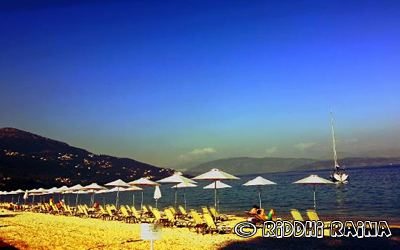 Glorious Greece is not only beautiful but has contributed lot during ancient times in science, art and literature. Travelling is like reading a book until you read all the pages you really fell incomplete. So here I am going to tell you about some of my experience in “Corfu” Ionian part of Greece. Corfu is bound with the history of Greece from the beginning of Greek Mythology. Greek name of Corfu is “Kerkira” and is related to two powerful water symbols of ancient Greek Mythology. Islands history is laden with battles and conquests. In 2007 Corfu city’s old city was designated for UNESCO world Heritage site. Two highly and well defined ranges divide island into three districts, of which the northern is mountainous, the central is undulating and southern is low-lying.
Glorious Greece is not only beautiful but has contributed lot during ancient times in science, art and literature. Travelling is like reading a book until you read all the pages you really fell incomplete. So here I am going to tell you about some of my experience in “Corfu” Ionian part of Greece. Corfu is bound with the history of Greece from the beginning of Greek Mythology. Greek name of Corfu is “Kerkira” and is related to two powerful water symbols of ancient Greek Mythology. Islands history is laden with battles and conquests. In 2007 Corfu city’s old city was designated for UNESCO world Heritage site. Two highly and well defined ranges divide island into three districts, of which the northern is mountainous, the central is undulating and southern is low-lying.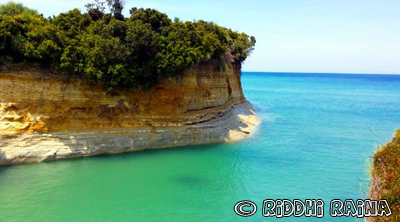 People are very friendly and make usage of Bravo! a lot in each sentence. It’s always nice to watch sun setting in one of the beaches in Corfu .It looks like the ball of fire just dropped into the sea leaving behind some hope of it coming back again.
People are very friendly and make usage of Bravo! a lot in each sentence. It’s always nice to watch sun setting in one of the beaches in Corfu .It looks like the ball of fire just dropped into the sea leaving behind some hope of it coming back again.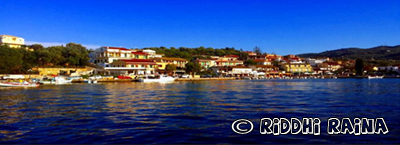 One thing which always keeps Corfu in my mind is my first scuba dive which was the best experiences of my life . For first time I saw life below the sea .It was so mesmerizing and a good life time experience feel traveling is like a ship which is not meant to be on harborand that’s not why it was built for. Another beautiful thing of Corfu is olive trees all over the place, almost everywhere on the roadside. This picture was taken from the top of Corfu.From mountains to beaches, Corfu defines the perferction of Greek’s beauty.It looks like the magic of island is gradually and gently settelled and formed like a pollen in a flower.
One thing which always keeps Corfu in my mind is my first scuba dive which was the best experiences of my life . For first time I saw life below the sea .It was so mesmerizing and a good life time experience feel traveling is like a ship which is not meant to be on harborand that’s not why it was built for. Another beautiful thing of Corfu is olive trees all over the place, almost everywhere on the roadside. This picture was taken from the top of Corfu.From mountains to beaches, Corfu defines the perferction of Greek’s beauty.It looks like the magic of island is gradually and gently settelled and formed like a pollen in a flower.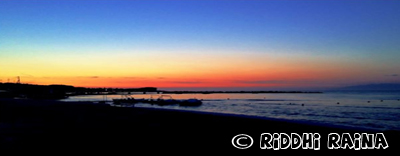 Corfu’s Sidari beach has Cliffs from where you can see the whole Sidari, one of the amazing views from the top of Cliff.Once you are on top of cliff it feels like the Ionian sea has joined hands with sky to cover entire Corfu and makes it look like a coral deep at the bottom of sea.
Corfu’s Sidari beach has Cliffs from where you can see the whole Sidari, one of the amazing views from the top of Cliff.Once you are on top of cliff it feels like the Ionian sea has joined hands with sky to cover entire Corfu and makes it look like a coral deep at the bottom of sea.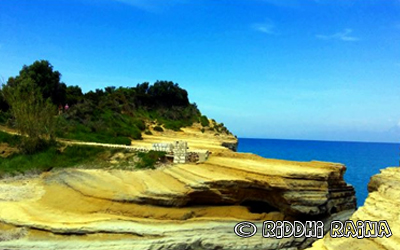 I always feel One part of my mind is in Corfu .This is my travel story of Corfu “A beautiful Pearl in a beautiful Necklace called” Greece.
I always feel One part of my mind is in Corfu .This is my travel story of Corfu “A beautiful Pearl in a beautiful Necklace called” Greece.
Content and Photograph by:
Riddhi Raina, Netherlands.
Email: riddhict90.it@gmail.com
Corfu
Corfu is a Greek island in the Ionian Sea. It is the second largest of the Ionian Islands, and, including its small satellite islands, forms the edge of the northwestern frontier of Greece. The island is part of the Corfu regional unit, and is administered as a single municipality. The municipality includes the island Corfu and the smaller islands Ereikoussa, Mathraki and Othonoi. The principal city of the island and seat of the municipality ( pop. 32,095 ) is also named Corfu. Corfu is home to the Ionian University.
The north-eastern coastline of Corfu lies off the coast of Sarandë, Albania, from which it is separated by straits varying in width from 3 to 23 km (2 to 14 miles), while the south-east side of the island lies off the coast of Thesprotia, Greece. The name “Corfu”, an Italian version of the Byzantine ?????? (Koryph?), meaning “city of the peaks”, derives from the Greek ??????? (Koryphai) (crests or peaks), denoting the two peaks of Palaio Frourio. Its shape resembles a sickle (drepan?, ???????), to which it was compared by the ancients: the concave side, with the city and harbour of Corfu in the centre, lies toward the Albanian coast. With the island’s area estimated at 588 km2 (227 sq mi), it runs approximately 64 km (40 mi) long, with greatest breadth at around 32 km (20 mi).
Two high and well-defined ranges divide the island into three districts, of which the northern is mountainous, the central undulating, and the southern low-lying. The more important of the two ranges, that of Pantokrator (??????????? – the ancient Istone) stretches east and west from Cape Falacro to Cape Psaromita, and attains its greatest elevation in the summit of the same name.
The second range culminates in the mountain of Santi Jeca, or Santa Decca, as it is called by misinterpretation of the Greek designation ????? ???? (Hagioi Deka), or the Ten Saints. The whole island, composed as it is of various limestone formations, presents great diversity of surface, and views from more elevated spots are magnificent. Beaches are found in Agios Gordis, the Korission lagoon, Agios Georgios, Marathia, Kassiopi, Sidari, Palaiokastritsa and many others. Corfu is located near the Kefalonia geological fault formation; earthquakes have occurred. Neither Corfu city or the countryside of the island have lost their traditional architecture hailing from the 16th century.
Corfu’s coastline spans 217 kilometres (135 mi) including capes; its highest point is Mount Pantokrator (911 metres (2,989 ft)); and the second Stravoskiadi, at 849 metres (2,785 ft). The full extent of capes and promontories take in Agia Aikaterini, Drastis to the north, Lefkimmi and Asprokavos to the southeast, and Megachoro to the south. Two islands are also to be found at a middle point of Gouvia and Corfu Bay, which extends across much of the eastern shore of the island; are known as Lazareto and Ptychia (or Vido). Camping areas can be found in Palaiokastritsa, Agrillia, with four in the northern part, Pyrgi, Roda, Gouvia and Messonghi.
Transport
The island is linked by two motorways, GR-24 in the northwest and GR-25 in the south.
Greek National Road 24, Cen., NW, Corfu – Palaiokastritsa
Greek National Road 25, Cen., S, SE, Corfu – Lefkimi
Corfu has ferry services both by traditional ferries to Gaios in the island of Paxoi and as far as Patras and both traditional ferries and advanced retractable airfoil, hydrodynamic-flow, high-speed ferries called Flying Dolphins to Igoumenitsa and Sarandë in neighbouring Albania. The small port of Lefkimmi is also to be found at the southernmost tip of the island on Cape Kavos, offering a ferry service to the mainland.
The Ioannis Kapodistrias International Airport, named after Ioannis Kapodistrias, a distinguished Corfiot and European diplomat, and the first governor of the independent Greek state, is located around three kilometres south of Kerkyra, just half a kilometre north of Pontikonisi. The approach and landing, in a northeasterly direction, afford passengers spectacular aerial views of Pontikonisi and Vlaheraina Monastery, also taking in the hills of Kanoni, as the runway employed for landing lies a few hundred metres from these spectacular local landmarks. The airport offers domestic flights from Olympic Airlines (OA 600, 602 and 606), and Aegean Airlines (A3 402, 404 and 406). Seaplanes, Air Sea Lines, a Greek seaplane operator, offers scheduled flights from Corfu to Paxoi, Lefkada, Ithaki, Kefalonia, Ioannina, Patras and Brindisi in Italy.
The buses to the main places on the island run about six times a day between the city and Glyfada, Sidari, Paleokastritsa, Roda and Acharavi, Lefkimmi, Lefkimmi and Piri. Other coaches drive up to twice a day to Athens and Thessaloniki. City buses run through the city to the Airport, Achilleon, Gouvia, Afra, Pelekas and some other places of interest.
A bike-sharing scheme called EasyBike Brainbox is available to get around the city.



